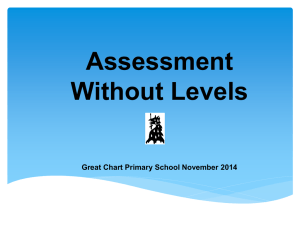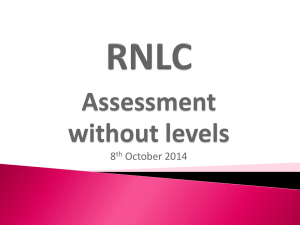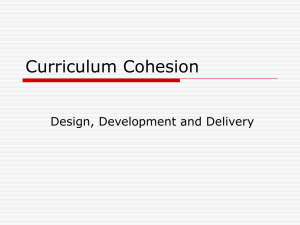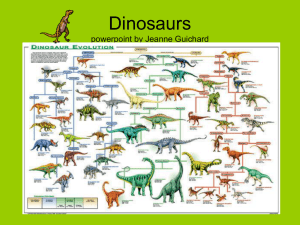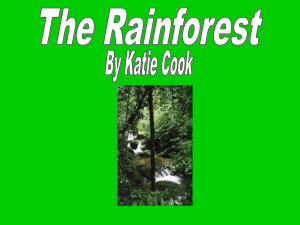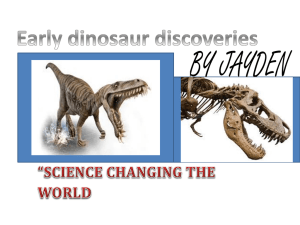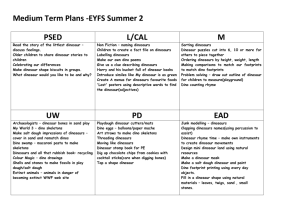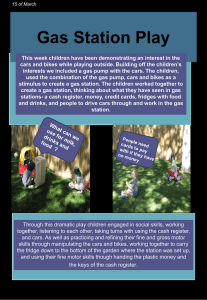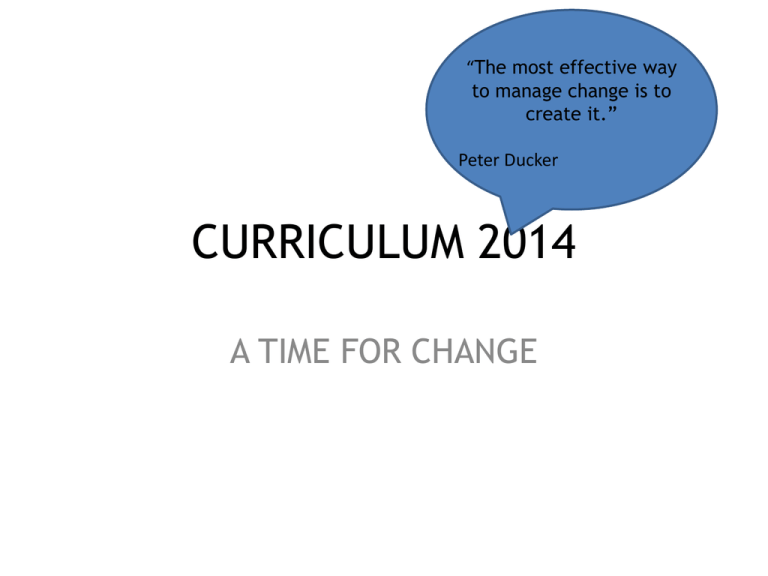
“The most effective way
to manage change is to
create it.”
Peter Ducker
CURRICULUM 2014
A TIME FOR CHANGE
OUTLINE OF MORNING
• Review of the core aims of our curriculum
• New National Curriculum – Facts
• Identification of what makes our school
special.
• Exploration of the new curriculum for each
year group – identification of the challenges.
• Learning Challenges approach to curriculum
delivery vs. Mantle of the Expert
• Marking policy
• Summary and next steps
OUR CORE AIMS…
• Look at the sheet – have we got it right?
• Are we missing anything?
WHAT DO WE WANT OUR CHILDREN TO BE WHEN THEY LEAVE OUR
SCHOOL?
Resilient and
reflective.
Be able to learn
independently and
love learning!
Competent readers,
writers and
mathematicians.
Able to
communicate
effectively (high
levels of oracy)
Able to get on well
with others – be
able to show
empathy.
IT competent – able
to use new
technologies which
may not even have
been invented yet
Responsible.
Confident.
Young adults with
high aspirations for
themselves.
Honest, empathetic
and trustworthy –
effective members
of society
OUR CORE AIMS…
• What do we need to add?
• Now rag rate our current curriculum against
these aims?
NEW NATIONAL CURRICULUM FACTS
• Pupils of compulsory school age in
community and foundation schools,
including special schools, and in voluntary
aided and voluntary controlled schools must
follow the National Curriculum.
• Schools are free to choose how they
organise their school day, as long as the
content of the National Curriculum
programmes of study is taught to all pupils.
NEW NATIONAL CURRICULUM FACTS
• By the end of each key stage, pupils are
expected to know, apply and understand the
matters, skills and processes specified in the
relevant programmes of study.
• The new National Curriculum identifies what
to teach but not how to teach.
• The new National Curriculum does not have
levels of attainment, but expectations at
each banding.
NEW NATIONAL CURRICULUM FACTS
• ‘Literacy’ title has been replaced by
‘English’.
• No PSHE or RE contained within the
Curriculum 2014 (but still to be taught).
• Act of daily worship expected.
NEW NATIONAL CURRICULUM - DFE
• English, Maths and Science are the building blocks of
education –improving our performance in these
subjects will be essential.
• In Maths there will be greater rigour. There will be a
greater emphasis on arithmetic, and the promotion
of efficient written methods of long multiplication
and division. There will also be more demainding
content in fractions, decimals and percentages.
• In Science there is a stronger focus on the
importance of scientific knowledge and language and
a greater emphasis on the core scientific concepts
underpinning pupils’ understanding. For the first
time primary aged children will learn about evolution
and inheritance.
NEW NATIONAL CURRICULUM - DFE
• The proposed English programmes of study will
embody higher standards of literacy. Pupils will
be expected to develop a stronger command of
the written and spoken word. Through the
strengthening of the teaching of phonics pupils
will be helped to read fluently.
• The study of languages is compulsory in Key Stage
2.
• Replace the current ICT curriculum with a new
computing curriculum with a much greater
emphasis on computational thinking and practical
programming skills.
NEW NATIONAL CURRICULUM - DFE
• It is essential to distinguish between the statutory
National Curriculum and the whole school curriculum.
All schools must provide a curriculum that is broadly
based, balanced and meets the needs of all pupils.
• Academies and Free Schools have the freedom to
depart from the National Curriculum. All schools
must teach religious education at all key stages and
secondary schools must provide sex education.
• In other subjects and key stages we are aiming to
give teachers more space and flexibility to design
their lessons by focusing only on the essential
knowledge to be taught in each subject.
TIMETABLE FOR CHANGE
WHEN?
SUBJECTS
NEW CURRICULUM
2013-2014
ICT
Dis-applied
Foundation Subjects
Dis-applied for all year
groups
Core subjects
Dis-applied Y3 and Y4 only
All subjects
All subjects must still be
taught
All subjects
Full statutory
implementation of the
National Curriculum 2014
2014
Note: Current Y4 pupils will be the first pupils to be assessed using ‘new’ SATs tests in
2016 so they will need to start being taught English, Maths and Science using the
Curriculum 2014 as soon as possible so they will not be disadvantaged.
DFE: “The majority of the new national curriculum will come into force from September
2014, so schools have a year to prepare to teach it. From September 2015, the new
national curriculum for English, Mathematics and Science will come into force for
Years 2 and 6.”
THEMES
OFSTED
DFE
A curriculum that:
• Raises achievement
• Is enjoyable
• Sparks learning
(evidenced from
children and staff)
• Meets the needs of
the children
A curriculum that:
• Provides knowledge
• Ensures we are raising
the game referenced
against international
comparators.
• Ensures secondary
‘readiness’.
WHAT MAKES OUR SCHOOL
SPECIAL?
• In the groups from earlier think about the
things that make our school special and
the impact this has on our children.
• Think about the things which are
challenges for us and what we try to do
(or need to do) to overcome these.
• Group leaders record these thoughts on
the A3 sheets.
NATIONAL CURRICULUM
• In your current year groups (EYFS look at Year
1) look through the new curriculum
requirements and discuss the following:
• What are the challenges of this new
curriculum?
• What development would you need?
HOW WILL WE DELIVER OUR
CURRICULUM?
• MANTLE OF THE EXPERT or something
else?
• https://www.surveymonkey.com/home/
LEARNING CHALLENGES
APPROACH?
Oracy
Plan for the context of our school and our children
BIG Question
Prelearning
Get the
pitch
right
Small Question
Small Question
Small Question
Small Question
Reflection
Review
and
celebrate
Clear learning
outcomes
With defined
knowledge and
skills
Small Question
Small Question
Enquiry based learning
Application
of basic
skills
Science: Year 2 Overview
Key Features
YEAR 2
PLANTS
ALL LIVING
THINGS AND
THEIR HABITATS
ANIMALS
(INCLUDING
HUMANS)
MATERIALS
SOUND
• Living and non
living things
• Habitats
•Exercise and
healthy living.
• Use of
different
everyday
materials
• Sources of
sound
• What plants
need to grow
•Early food
chains
•Growing seeds
from bulbs
LEARNING
CHALLENGE
HOW CAN WE
GROW OUR
OWN SALAD?
•What animals
and humans
need to survive.
•Animals have
offspring which
grow to be
adults.
WHY WOULD A
DINOSAUR NOT
MAKE A GOOD
PET?
HOW COULD
YOU BE THE
NEXT JESSICA
ENNIS OR MO
FARROW?
• Louder and
softer sounds
•Classifying and
grouping
•Changing
materials by
bending etc.
WHAT IS OUR
SCHOOL MADE
OF?
WHERE DID
THAT RACKET
COME FROM?
KEY CONSIDERATIONS
Context
Hook
Progression
and
Continuity
Meeting NC
requirements
LEARNING
CHALLENGE
Locality
Reflection
Oracy
Interest
YEAR 2: Why Would a Dinosaur Not Make a Good Pet?
KS1 Science (Y2 All Living Things and their
Habitats)
• Identify that most living things live in habitats to which they are
Working Scientifically: sorting and classifying things
according to whether they are living, dead or were never
alive, and recording their findings using charts.
suited and describe how different habitats provide for the basic
needs of different kinds of animals and plants and how they depend
on each other.
English Link: Research into which animals lay eggs and
which do not. In addition they would need to find out
about the sizes of eggs etc. They will then create fact files
about specific dinosaurs.
HOOK: Children find a very large egg in the class and they
have to find out where it has come from and whose egg it is.
Maths Link: Opportunities through the classification of
dinosaurs to tally to make tables and graphs.
LC1
Who does the egg belong to?
LC2
What does a dinosaur need to survive?
LC3
What can you find out about a particular
dinosaur?
LC4
How can you re-create your own dinosaur land?
LC5
How can you classify dinosaurs?
LC6
How can we re-create the sound and movement
of dinosaurs?
LC7
How do you know that dinosaurs really roamed
the Earth?
LC8
Reflection: How can you produce a TV
programme about dinosaurs?
Habitats Link: This LC is about working out what their own
pets need to survive. They will then consider what
dinosaurs would have needed and recognise the key
components that are required for animals to live and
flourish.
Creative Art Link: This LC will see children re-create a
dinosaur land. It will involve several DT skills as children
plan, design, create and evaluate their models.
Expressive Art Link: Children will try and simulate the
sounds that would have heard in land where dinosaurs
roamed. They will use a range of instruments to create the
sounds and then aim to have the sounds linked to the
dinosaur land models they have created. These will then
feature as part of their reflection.
Harry’s
Dinosaurs
Ian
Whybrow
Tyrannosa
-urus Trip
Julia
Donaldson
Geography and History: Year 5 Overview
Key Features
GEOGRAPHY
Human
Brazil – trade and
grown economy
- Fair Trade
YEAR 5
LEARNING
CHALLENGES
Physical
Rainforests of the
Amazon
Brazil – physical
features
HISTORY
Anglo-Saxons
-Settlements and
kingdoms
-Art and Culture
-Christianity
conversion
Early Civilisations
-Ancient Egyptians
-Ancient Sumer
-Indus Valley
-Shang Dynasty of
Ancient China
A Study of an
aspect or theme in
British history,
beyond 1066
-The execution of
Charles 1
- Hitler’s invasion
of Poland and its
impact on Britain.
WERE THE ANGLOSAXONS REALLY
SMASHING?
HOW CAN WE REDISCOVER THE
WONDER OF
ANCIENT EGYPT?
WHY SHOULD
GUNPOWDER,
TREASON AND
PLOT NEVER BE
FORGOTTEN? Or
HOW COULD
HITLER HAVE
CONVINCED A
NATION LIKE
GERMANY TO
HAVE FOLLOWED
HIM?
• Locate the world’s countries, using maps
to focus on Europe and North and South
America and concentrating on their
environmental regions, key physical and
human characteristics, countries and
major cities.
WHY IS BRAZIL IN
THE NEWS AGAIN?
WHY SHOULD THE
RAINFORESTS BE
IMORTANT TO US
ALL?
YEAR 5: Why should the rainforest be important to us all?
KS2 Geography:
• Locate the world’s countries, using maps to focus on South
America and concentrating on their environmental regions, key
physical and human characteristic.
HOOK: Show some film clips of the rainforests.
LC1
How can you create your own class rainforest?
LC2
Where are rainforests located and what are their
main features?
LC3
Why are rainforests often in the news and what
can we do to help?
LC4
What can you find out about an endangered
animal that lives in the rainforest?
LC5
How important is the Amazon to the South
American rainforest?
LC6
Can you create a print using the large leaves of
rainforest plants as your inspiration?
LC7
How would you survive in the rainforest?
LC8
Reflection: Present a documentary on a day in
the rainforest.
English Link: LC4 provides opportunities for children to
carry out their own research and to present their findings in
a range of interesting ways which may involve ICT. LC3 will
provide opportunities for children to use their persuasion
skills when making cases for saving the rainforests.
Maths Link: LC5 provides opportunities for children to use
their measurements skills.
Creative Art Link: LC1 sees children working together to
design and create their own rainforests. This will involve
dividing tasks up between them and making decisions
about what they will have within the rainforest.
LC6 sees children using large leaves to create their own
designs and prints.
LC7 – Design and build shelters.
Forever
Forest
Kristin Joy
Pratt
Serafini
The Lorax
Dr Seuss
The Great
Kaphak
tree
Lynne
Cherry
LEARNING CHALLENGE OR MANTLE
OF THE EXPERT?
• You decide!
UPDATE TO MARKING POLICY
• Pink for perfect – no spelling or grammar
mistakes, meets the LO.
• Green for growth – mistakes related to
the CG comment or spelling and grammar
(appropriate for the developmental stage
of each pupil)
• Purple Polishing Pen – children correct
their ‘green’ mistakes and answer the
CG.
HAVE A GO!
• Look at the examples of writing on the
sheets and have a go at marking them
using the two colours (pink for perfect
and green for growth)
• Any issues or questions?
SUMMARY
• New NC to be in place for September 2014 – start trialling in
Summer term.
• Curriculum delivery approach and planning needs to start
happening this year.
• More flexibility with the timings – adapting our timetables
(from Summer term).
• More emphasis on oracy and the acquisition of knowledge –
starting now.
• Our curriculum needs to be relevant for our children so
we need to ensure we keep in the things we value.
• New Marking Policy will need to be explained to the
children tomorrow and implemented immediately.

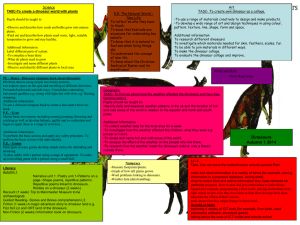

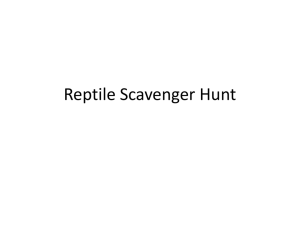
![afl_mat[1]](http://s2.studylib.net/store/data/005387843_1-8371eaaba182de7da429cb4369cd28fc-300x300.png)
